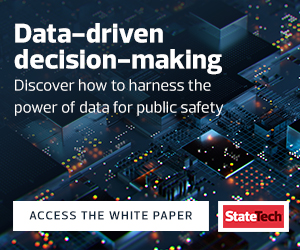What Does a Fusion Center Information Architecture Look Like?
The Justice Department and DHS have produced a Fusion Center Technology Guide to “provide a methodology for fusion center directors and managers to facilitate technology planning and to provide a practical perspective on the value of technology as an enabler to the fusion center mission.”
As fusion center managers in state and local jurisdictions and those they work with are putting together fusion centers or modernizing them, there are several functions they should keep in mind, the guide notes.
According to the guide, the technology planning and alignment function of enterprise architecture “establishes a future vision for the technology portfolio (applications, infrastructure, information exchanges, etc.),” the guide notes. The technology in a fusion center should align with the fusion center’s “business strategy” or purpose, and this alignment “ensures that technology investment decisions move the organization ever closer to achieving this vision.”
The technology innovation function enables research and development into “new technologies that could increase the organization’s efficiency or enable” new capabilities.
Meanwhile, the guide notes, the technology standards function “reduces unnecessary (and potentially wasteful) variation in the technology portfolio by establishing and enforcing best practices.”
There are multiple subfunctions of the technology standards function, but a crucial one is information architecture, which “establishes the meaning, location, and ownership of data stored and managed within the organization in support of its mission, vision, and strategic goals.” This information architecture also sets up how a fusion center describes and structures information it shares with external partners.
The technology architecture subfunction “identifies the technology infrastructure necessary to support the organization’s mission, vision, and strategic goals.” That includes networks, devices (server computers, workstation computers, mobile devices), storage, physical plant (floor space, climate control, power), tools for business continuity (backup power, disaster recovery, fire suppression) and technology for physical security (access control, intrusion detection).
READ MORE: What steps need to be taken when your agency is deploying a next-generation work center?
What Data Security/Analysis Tools Do Fusion Centers Need?
Due to their function of assessing suspicious activity reports, particularly reports related to crime and terrorism, fusion centers need technology components that allow staff to analyze and act upon data from wide range of sources.
They therefore need data visualization technologies, which include video wall displays and software to help visualize data. “Data visualization is the analytic key to actionable intelligence,” Houston Thomas III, a senior business development strategist and public safety senior strategist at CDW•G, writes in a blog post. “The human mind is designed to quickly comprehend information presented in a clear, graphical fashion, and the best NGWCs take advantage of this by reproducing the operating picture onto large video wall displays.”
Another key component for fusion centers is analytics software that enables staff to bring together and analyze large amounts of data, including from critical infrastructure, satellite imagery and crime databases. Data analytics tools are needed to break down information silos and enable the sharing and analysis of threat intelligence.














